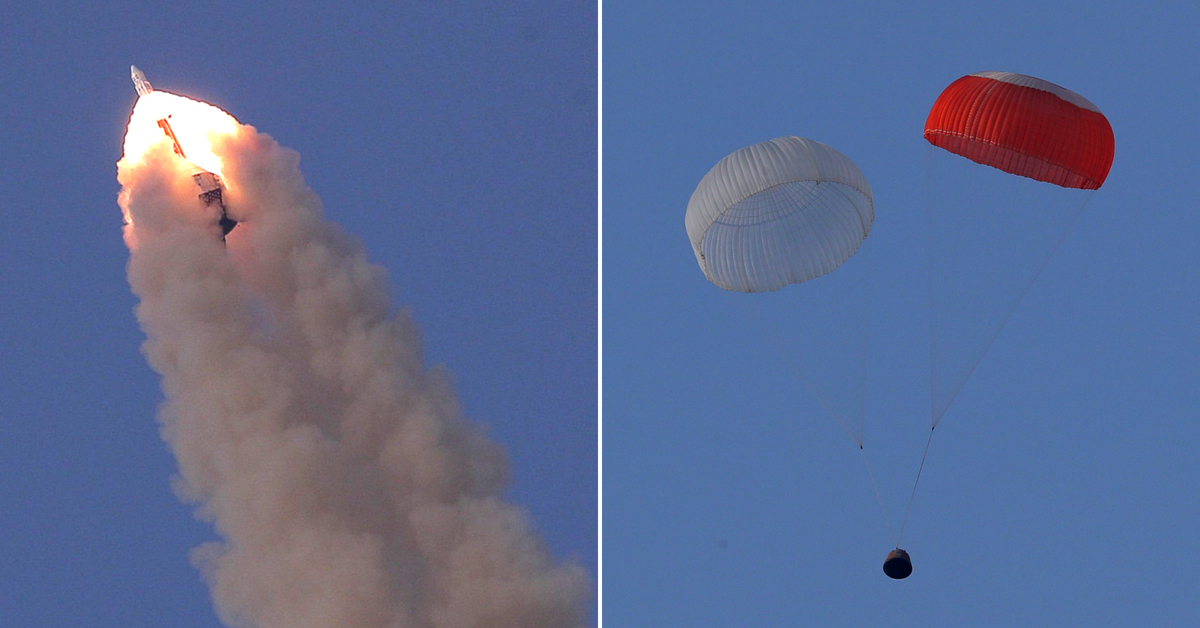ISRO Successfully Tests Crew Escape System, Paves Way For Human Spaceflight!
"... the Crew Escape System along with crew module soared skyward, then arced out over the Bay of Bengal and floated back to Earth under its parachutes about 2.9 km from Sriharikota.”

On 9 August 2007, The Hindu had reported that G Madhavan Nair, who was the Chairman of the Indian Space Organisation (ISRO) at the time, was seriously considering a human spaceflight mission in the future, and that ISRO was developing human-rated launch vehicles.
Fast forward to 2018, where that thought is turning into reality!
As reported in the Times of India, on Thursday morning, ISRO took the first important step towards launching astronauts in space, by successfully conducting a test of the Crew Escape System.
Before high-powered machines and willing humans, any space launch requires an escape measure for astronauts, so that they can escape to safety in case of an emergency.
The Crew Escape System is one such measure and is designed to quickly separate the crew module along with the astronauts to a safe distance, in the case of a crisis, for example, an impending explosion.

The ISRO update on the test was as follows:
“After a smooth countdown of 5 hours, the Crew Escape System along with the simulated crew module with a mass of 12.6 tonnes, lifted off at 07.00 AM (IST) at the opening of the launch window from its pad at Satish Dhawan Space Centre, Sriharikota today. The test was over in 259 seconds, during which the Crew Escape System along with crew module soared skyward, then arced out over the Bay of Bengal and floated back to Earth under its parachutes about 2.9 km from Sriharikota.”
Reaching an altitude of 2.7 km, the seven specifically designed solid motors took away the crew module to a safe distance. Nearly 300 sensors recorded various mission performance parameters during the test flight said the report.
The Crew Escape System is only one such requirement for a manned space mission. Speaking to ToI, K Sivan, the chairman of ISRO, said, “Our next test will focus on aborting the capsule at flight mode. Like today’s test, many components needed for the country’s first manned mission will be tested in the near future.”
Till now, only three countries have been successful in carrying out manned missions to outer space—Russia, China, and the USA. With this successful test, ISRO is one step closer to adding such a mission to its list of triumphs.
(Edited by Gayatri Mishra)
Hey, you may also like: Satish Dhawan: The Story of The Legend Who Shaped India’s Space Programme
Like this story? Or have something to share?
Write to us: [email protected]
Connect with us on Facebook and Twitter.
NEW: Click here to get positive news on WhatsApp!
If you found our stories insightful, informative, or even just enjoyable, we invite you to consider making a voluntary payment to support the work we do at The Better India. Your contribution helps us continue producing quality content that educates, inspires, and drives positive change.
Choose one of the payment options below for your contribution-
By paying for the stories you value, you directly contribute to sustaining our efforts focused on making a difference in the world. Together, let’s ensure that impactful stories continue to be told and shared, enriching lives and communities alike.
Thank you for your support. Here are some frequently asked questions you might find helpful to know why you are contributing?


This story made me
-
97
-
121
-
89
-
167













